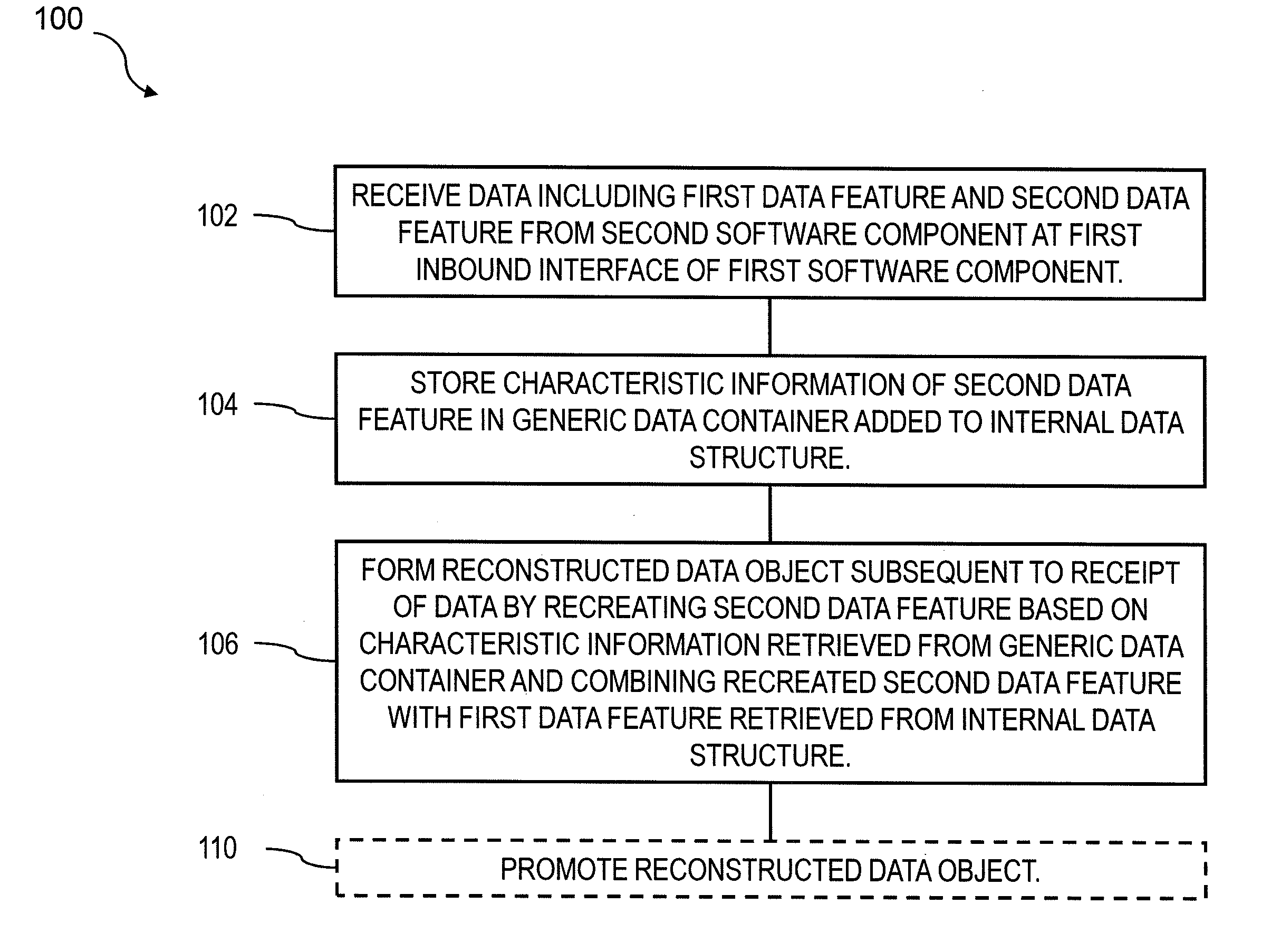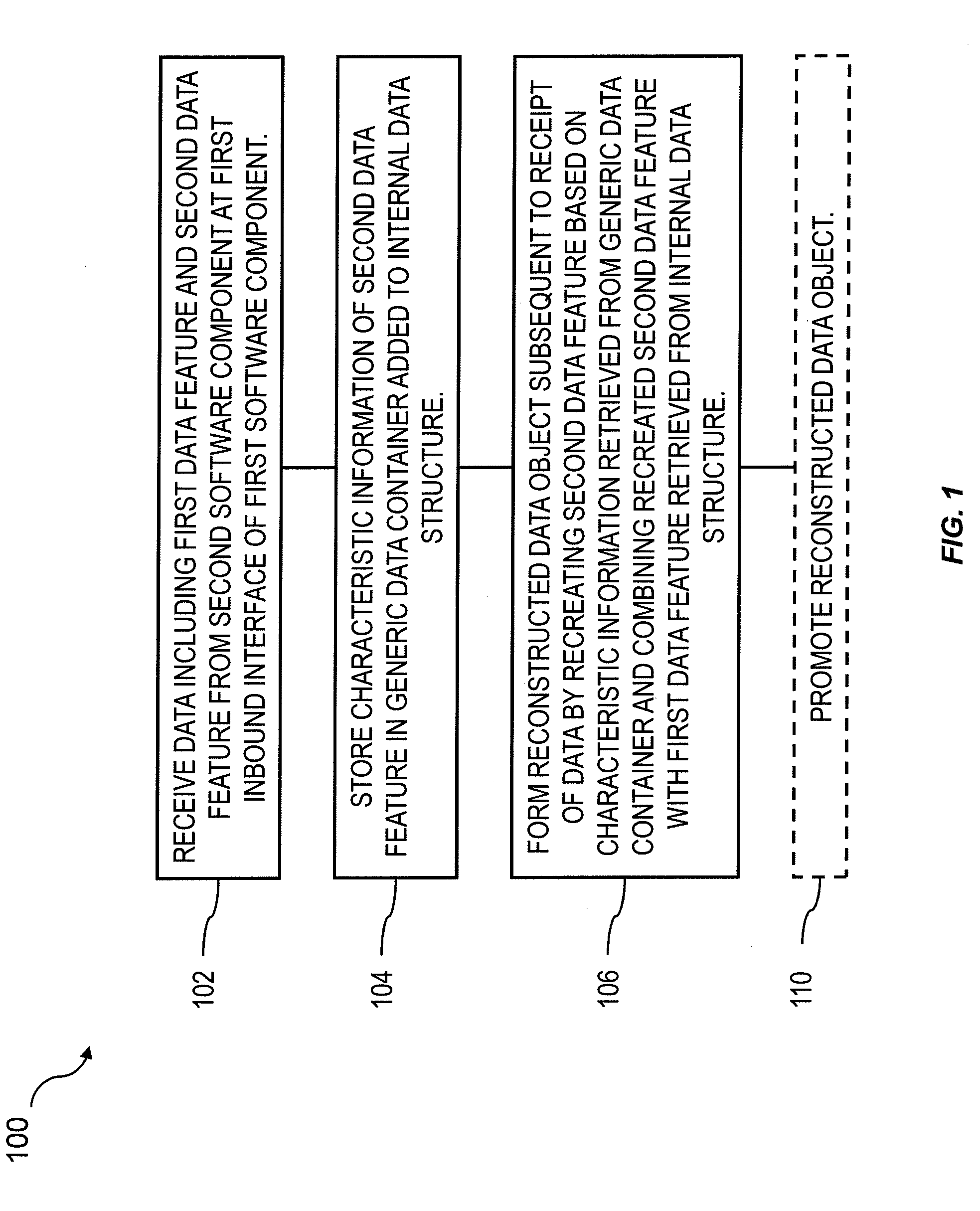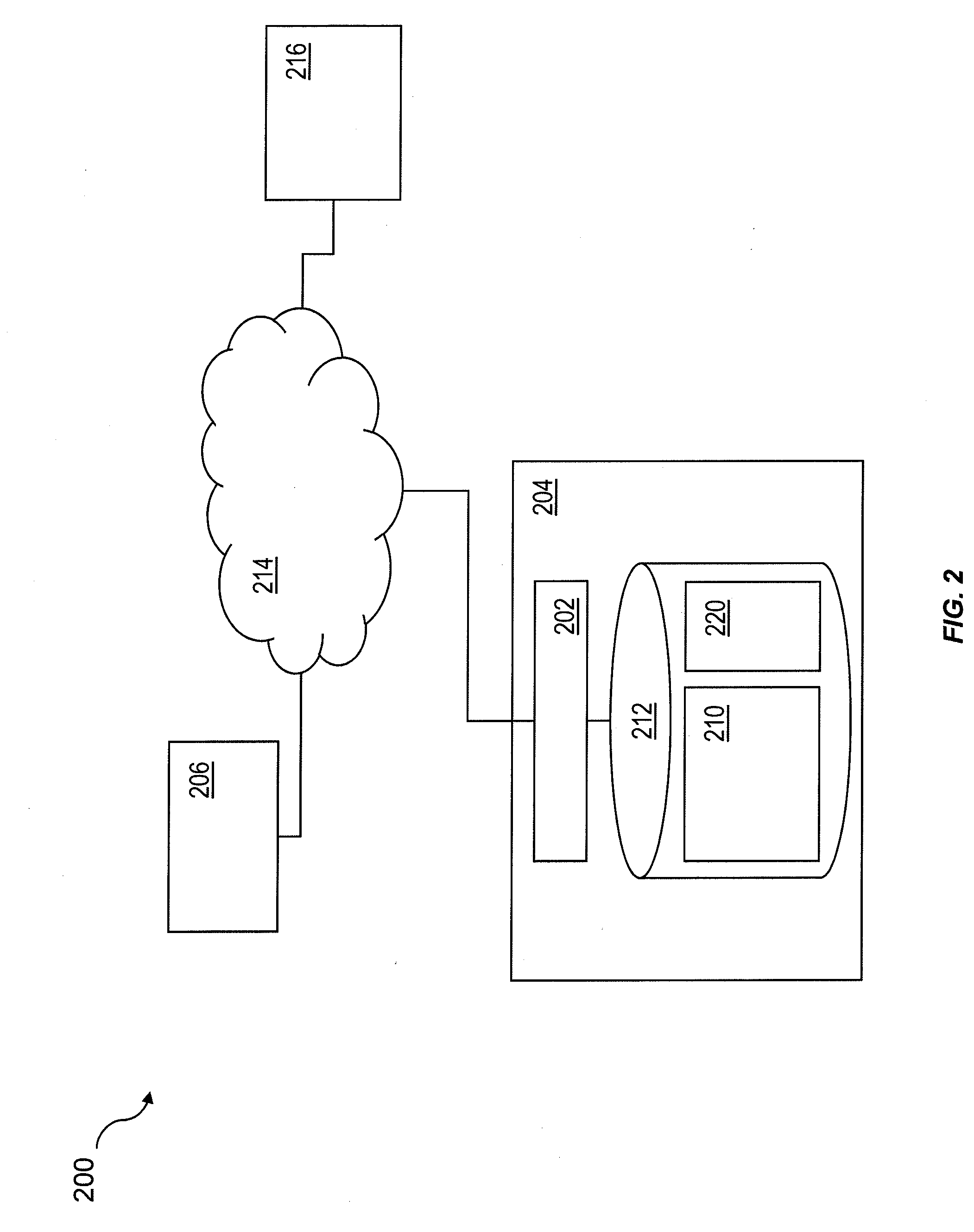Support for temporally asynchronous interface extensions
a technology of temporally asynchronous interface and extension, applied in the direction of interprogram communication, program control, multi-programming arrangement, etc., can solve the problems of inability to communicate between systems with incompatible interfaces, cumbersome approach, etc., and achieve the effect of convenient handling
- Summary
- Abstract
- Description
- Claims
- Application Information
AI Technical Summary
Benefits of technology
Problems solved by technology
Method used
Image
Examples
Embodiment Construction
[0021]To address the above-noted and potentially other issues with currently available solutions, one or more implementations of the current subject matter provide methods, systems, articles or manufacture, and the like that can, among other possible advantages, provide for data communication in a distributed network environment, such as for example in an architecture of networked components, in which individual users and administrators cannot control aspects of the lifecycle state of all of the networked components. Heterogeneous system landscapes that include multiple components can be supported, as can component-specific extension fields and interface changes across software versions, such as for example temporally asynchronous changes to components introduced by upgrades.
[0022]One or more implementations of the current subject matter can enable a component to accept unilateral enhancements of interfaces in other business systems, applications, application components, and the lik...
PUM
 Login to View More
Login to View More Abstract
Description
Claims
Application Information
 Login to View More
Login to View More - R&D
- Intellectual Property
- Life Sciences
- Materials
- Tech Scout
- Unparalleled Data Quality
- Higher Quality Content
- 60% Fewer Hallucinations
Browse by: Latest US Patents, China's latest patents, Technical Efficacy Thesaurus, Application Domain, Technology Topic, Popular Technical Reports.
© 2025 PatSnap. All rights reserved.Legal|Privacy policy|Modern Slavery Act Transparency Statement|Sitemap|About US| Contact US: help@patsnap.com



